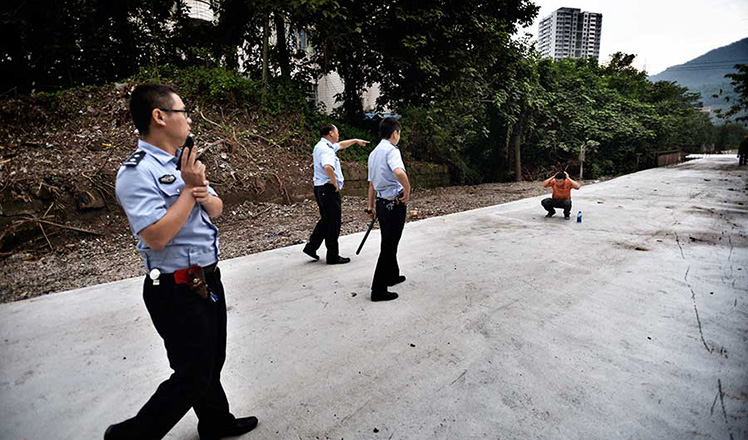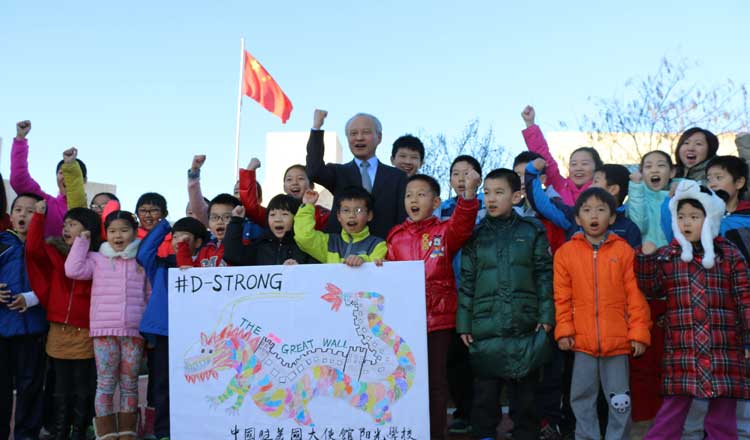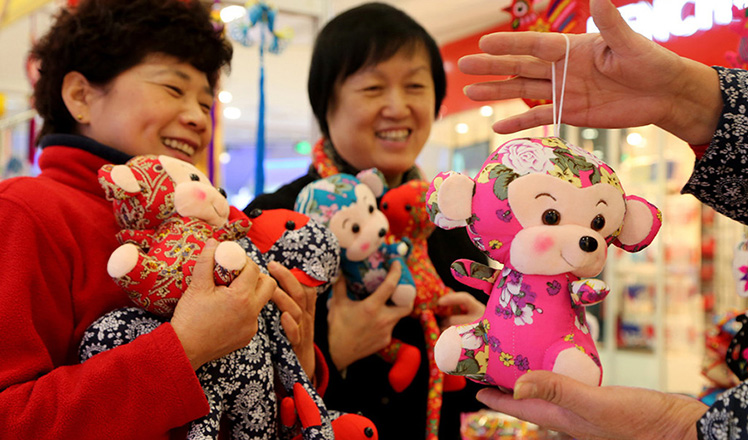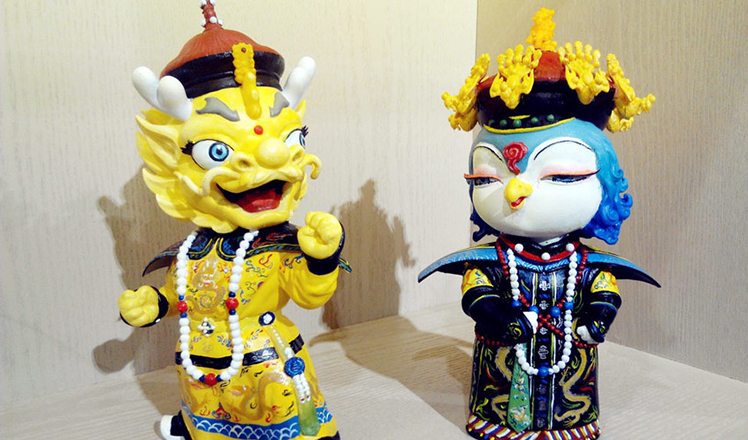New fonts give Tibetans texting options
Updated: 2016-01-15 17:36
By Xinhua and China Daily(China Daily USA)
|
||||||||
Computer users, publishing houses also embrace the typefaces based on murals, historical stamps and more
The release of brand-new Qomolangma Tibetan fonts by the China Tibetology Research Center means the iPhone is no longer the only mainstream option for Tibetans who want a smartphone that can display their language.
Tibetan-speaking users can download the fonts from the Internet and personalize their smartphones by choosing their favorite fonts from among 17 typefaces. Previously, only Uchen, the classic block-style Tibetan script, was offered.
|
The Qomolangma-Horyig font, a popular typeface among the Qomolangma Tibetan fonts, was once reserved for the seals of imperial families and living Buddhas. Photos Provided to China Daily |
|
The other three fonts among the 17 typefaces offered by the Qomolangma Tibetan fonts by the China Tibetology Research Center. |
|
The fonts project leader Tashi Tsering at his office at the China Tibetology Research Center. |
The fonts have quickly been adopted by computer users and publishing houses as well.
The technical advances achieved by Tibetan researchers over the course of eight years have made digital Tibetan stylish, said Norgye, director of the Information Center of the Minzu Publishing House, which released the new fonts in mid-November.
"It's like having only one set of clothing for a long time. Suddenly, you can dress up and pick whatever you want from the closet for different occasions. Such change is exhilarating to end users," Norgye said.
As at least eight of the fonts are based on the handwriting of famous Tibetan calligraphers, the Qomolangma fonts display the essence of Tibetan lettering design.
The breakthrough required overcoming many difficulties, as the rules related to handwritten Tibetan vary extensively, said Lu Yajun, of the Tibetology Institute at the Northwest University for Nationalities. The stroke of one vowel can extend over several words, for example, quite a challenge for digital media, he said.
"Compared with the previous stiff Tibetan fonts available, the new Qomolangma fonts are more flexible. With the stretched strokes, they often remind me of shadowboxing," Lu said.

Lu, who has studied Tibetan culture for decades, said he was impressed by the Tibetan people's passion for calligraphy. Tibetan children traditionally practice handwriting with a bamboo pen on a sand-covered plank to improve their writing skills before moving onto paper. A Tibetan idiom even likens a good author with poor handwriting to a warrior with a broken arm, he said.
To quench the public thirst for stylish Tibetan fonts in the digital world, the research center launched the government-funded project in 2007.
An expert panel was organized to decide the style of each font so that the Qomolangma fonts could meet the aesthetic preferences of Tibetans in different regions, said Tashi Tsering, a researcher who led the project.
Apart from being artistic, the Qomolangma fonts also had to display a strong historical flavor while meeting the different needs of publishing houses.
The most eye-catching fonts are the Qomolangma-Dunhuang, which is based on Tibetan works collected in the Dunhuang Grottoes in Gansu province, the oldest Tibetan works on murals; the Qomolangma-Woodblock, which is based on the scriptures in the Drepung Monastery in Lhasa; the Qomolangma-Edict, which is based on ancient imperial edicts and historical documents; and the Qomolangma-Horyig, which is based on historical stamps and documents.
To Tashi Tsering's surprise, the Horyig font previously reserved for the seals of imperial families and prestigious living Buddhas was particularly welcomed by users. It allows a publishing house to test a vertical layout for the first time and gives Tibetans a chance to have their own seals. "Horyig fonts are not easy to recognize and are barely used now. Growing interest might revive the use of the dying font," he said.
When Tashi Tsering was studying at Tsinghua University in 1985, IBM had just began manufacturing personal computers.
"When I first saw Chinese characters pop up on the screen, I started to dream big. I wished one day Tibetan could also be typed and I thought I could be the one to stand up and give it a try," he said.
In the following years, he has studied computer technology at Tsinghua and Tibetan at Minzu University of China. After joining the research center upon graduation, he devoted himself fully to the development of information technology in the Tibetan language.
Over the past 30 years, he has participated in the development of Chinese and international computer coding standards for Tibetan, invented the Himalaya Tibetan font for Microsoft and compiled the Tibetan-Chinese-English Information Technology Dictionary.
Based on international encoding standards and OpenType technology, the New Qomolangma fonts adapt to the operation systems of Windows, Macintosh, Android and Linux, and are highly compatible with different computers and smartphones.
As previous fonts were developed according to self-defined coding standards, they would appear as gibberish on other operating systems, making Tibetan database construction very inefficient.
Lu, of the Tibetology Institute, said more and more technicians realized the only way Tibetans could embrace information technology was to follow internationally recognized standards.
"The spread of the Qomolangma fonts will definitely speed up the process," he said.
In the past few weeks, Tashi Tsering has received good feedback from users, including phone producers seeking authorization to pre-install a certain font on their products and publishing houses soliciting help in processing complicated Tibetan words.
Free downloads of the Tibetan fonts have pleased many smartphone sellers in Lhasa because they have helped their business.
"This is a good thing for Tibetan people as the Tibetan language is widely used in Tibet, and it has brought great conveniences for them," said Yan Baichuan, 39, a mobile phone shop owner in Lhasa.
With the emergence of Tibetan for smartphones, iPhones no longer dominate the mobile phone market in Tibetan areas. They are too expensive for many Tibetans in pastoral and farming areas.
"Now the situation is different. People can buy less expensive cellphones and install Tibetan fonts themselves. More Tibetans can benefit from digital technology," said Dordram, vice-president of Gansu Normal University of Nationalities in Hezuo, Gansu.
Drolma, 26, a Tibetan mobile phone seller in Lhasa, said it's easy to download Tibetan to the Android smartphones. "It has become a trend that Tibetan customers always ask the seller if a phone can download the Tibetan language before they decide to buy one," he said.
To download the fonts for free, users can log on to yalasoo.com. A copybook of the Qomolangma fonts has also been published by the China Tibetology Publishing House.
Cheng Yunjie and Palden Nyima contributed to this story.
(China Daily USA 01/15/2016 page5)
- Massive dinosaur skeleton will spill out of hall at NY museum
- Pakistan confirms detention of top suspect of Indian airbase attack
- US sailors made 'navigational error' into Iranian waters
- 14 killed in tour bus crash in central Japan
- Blasts and gunfight in Jakarta leave six dead
- Jakarta police headquarters in first-security alert

 For police officers, duty is all in a day's work
For police officers, duty is all in a day's work
 Children at Chinese embassy in US send wishes to Dorian
Children at Chinese embassy in US send wishes to Dorian
 People prepare for Chinese New Year
People prepare for Chinese New Year
 Souvenirs and Apps make a refreshing Palace Museum
Souvenirs and Apps make a refreshing Palace Museum
 Monkey portraits by Chinese ink painting masters
Monkey portraits by Chinese ink painting masters
 SWAT members hold romantic wedding in E China
SWAT members hold romantic wedding in E China
 Stephane Peterhansel regains Dakar Rally lead
Stephane Peterhansel regains Dakar Rally lead
 Goodbye to steam trains
Goodbye to steam trains
Most Viewed
Editor's Picks

|

|

|

|

|

|
Today's Top News
National Art Museum showing 400 puppets in new exhibition
Finest Chinese porcelains expected to fetch over $28 million
Monkey portraits by Chinese ink painting masters
Beijing's movie fans in for new experience
Obama to deliver final State of the Union speech
Shooting rampage at US social services agency leaves 14 dead
Chinese bargain hunters are changing the retail game
Chinese president arrives in Turkey for G20 summit
US Weekly

|

|


